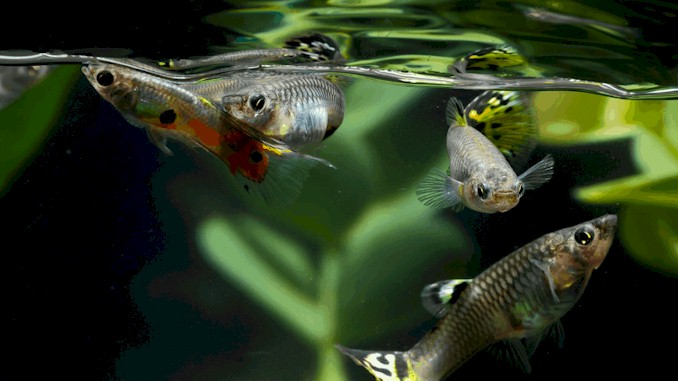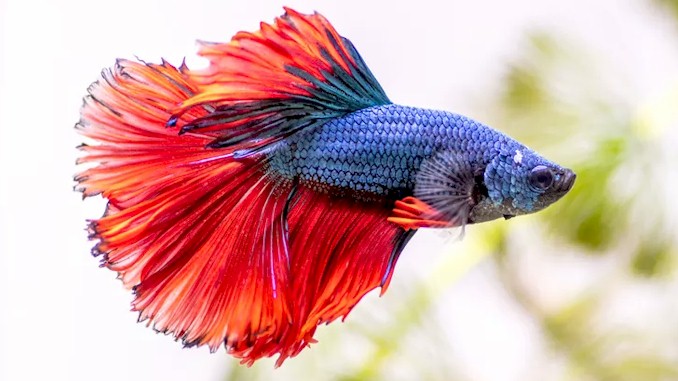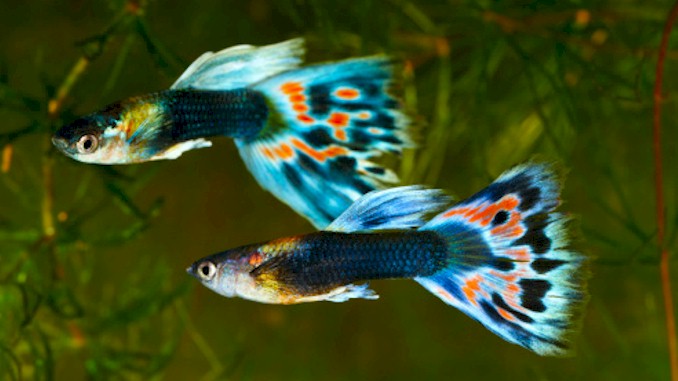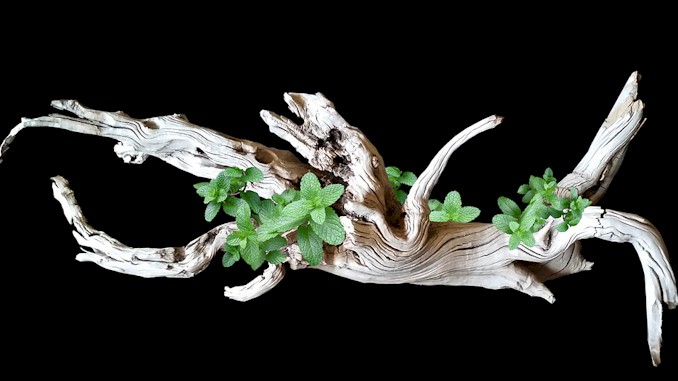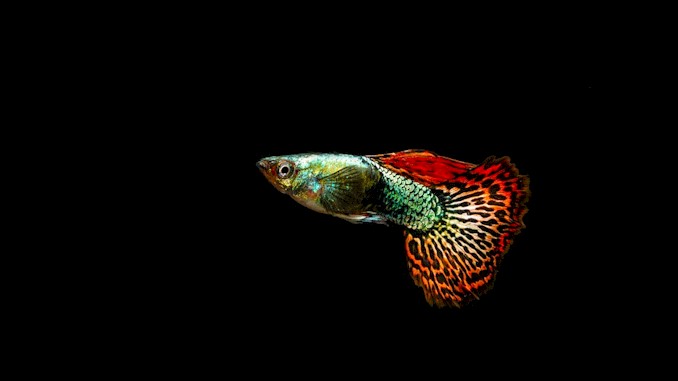Stop Guppy Aggression: Expert Advice for a Harmonious Tank.
Guppies are pretty hardy creatures, which is why I enjoy growing them in my aquarium. However, their behavior could be unpredictable. For example, more than once, I’ve noticed that my guppies consistently bully and chase their tank mates. To solve that issue, I began researching the reasons for it pretty profoundly. Through my extensive research and personal experience, I have discovered the root causes of guppy aggression and effective methods to mitigate it. In this blog post, I will share my insights on why your guppies might be attacking other fish and provide practical solutions to help you create a harmonious aquatic environment.
Guppies can become aggressive towards other fish for several reasons. The most common cause of guppy aggression is a lack of space in the tank. Guppies require ample swimming room and territories to establish their dominance, and a cramped tank can lead to aggressive behavior. Another reason for guppy aggression is stress, which can be caused by poor water quality or incompatible tank mates. By addressing these factors and providing a suitable environment, you can prevent your guppies from attacking other fish.
In addition to the causes of guppy aggression, there are several other important factors to consider when managing the behavior of your fish. In the following sections of this post, I will discuss these factors in more detail and offer practical advice on how to create a peaceful and healthy aquarium environment. By the end of this article, you will have a comprehensive understanding of guppy aggression and the tools to prevent it. So keep reading to learn more and ensure your fish thrive in your aquarium!
Signs of Aggression in Guppies: What to Look For
Signs of aggression in guppies are not always easy to spot, but they can be crucial indicators of a problem in your aquarium. Aggression can manifest in several ways, including chasing, nipping, and fin biting. If you notice any of these behaviors, it is essential to investigate the cause and take appropriate action to prevent further aggression.
Chasing is a common sign of guppy aggression, and it is typically initiated by dominant males. If one or more guppies are chasing another fish around the tank, it may be a sign of territorial aggression. This behavior can be stressful for the targeted fish, and if it continues, it can lead to injury or death.
Nipping is another common sign of guppy aggression, and it can result in damaged fins and skin. Nipping is typically initiated by smaller, less dominant guppies and can be a sign of stress, poor water quality, or overcrowding. If you notice nipping behavior in your aquarium, it’s essential to address the underlying cause and separate any fish that are being targeted.
Fin biting is a particularly severe form of aggression and can lead to severe injury or death. This behavior involves one guppy biting the fins of another, often resulting in shredded or missing fins. Fin biting can be a sign of stress, poor water quality, or incompatible tank mates. It is essential to address the cause of fin biting immediately and separate any fish that are being targeted.
As you can see, aggression in guppies can manifest in several ways, including chasing, nipping, and fin biting. These behaviors can be signs of stress, poor water quality, or incompatible tank mates. If you notice any signs of aggression in your guppies, it is essential to investigate the cause and take appropriate action to prevent further aggression.
Addressing Aggression in Individual Guppies: Tips and Tricks
Addressing aggression in individual guppies can be a challenging task, but there are several tips and tricks that you can use to manage aggressive behavior in your aquarium.
One effective strategy is to isolate the aggressive guppy in a separate tank or divider. This technique can help reduce stress and prevent injury to other fish in the tank. Additionally, it can provide the aggressive guppy with a chance to establish its own territory, reducing the likelihood of aggression towards other fish.
Another approach is to provide ample hiding spaces and visual barriers in the tank. This can be achieved by adding plants, decorations, and other tank features that create nooks and crannies for fish to hide in. By providing hiding spaces, you can help reduce stress and prevent aggressive behavior in your guppies.
It is also essential to maintain good water quality in your aquarium. Poor water quality can cause stress and make your fish more susceptible to aggression. Make sure to perform regular water changes, maintain appropriate pH and temperature levels, and use a high-quality filtration system to ensure your aquarium water is clean and healthy.
Another useful technique for addressing aggression in individual guppies is to adjust feeding habits. Overfeeding can lead to aggression, as guppies may become territorial over food. Try feeding smaller, more frequent meals throughout the day and removing any uneaten food after feeding sessions.
Finally, it is essential to monitor your guppies’ behavior and make adjustments as necessary. If a particular tank setup or feeding schedule is causing aggression, try modifying these factors to see if it helps. By monitoring your guppies’ behavior and making changes as needed, you can create a peaceful and healthy aquarium environment for your fish.
As we have learned, addressing aggression in individual guppies requires a multifaceted approach that includes isolation, providing hiding spaces and visual barriers, maintaining good water quality, adjusting feeding habits, and monitoring behavior. By implementing these tips and tricks, you can effectively manage aggression in your aquarium and create a peaceful environment for your guppies to thrive in.
Strategies for Reducing Aggression in Guppy Populations
Reducing aggression in guppy populations can be a more challenging task than addressing aggression in individual guppies. However, there are several strategies you can use to help manage aggression in your guppy community.
One effective strategy is to ensure that there is ample space in your aquarium. Overcrowding can lead to aggression, as guppies may become territorial over limited space. Make sure to provide plenty of swimming room and hiding spaces for your guppies, and avoid overstocking your tank.
Another approach is to ensure that there is a good balance of males and females in your guppy population. Too many males can lead to aggression, as they may compete for the attention of female guppies. By keeping a more even ratio of males and females, you can help reduce aggression in your guppy population.
Additionally, introducing new guppies to your tank gradually can help reduce aggression. Adding too many new fish at once can lead to territorial disputes and aggression. Instead, add new guppies one or two at a time, and monitor their behavior closely.
It can also be helpful to provide your guppies with plenty of hiding spaces and visual barriers in the tank. This can help reduce stress and prevent aggressive behavior. Adding plants, decorations, and other tank features can create nooks and crannies for your guppies to hide in, reducing the likelihood of aggression.
Finally, maintaining good water quality is essential for reducing aggression in guppy populations. Poor water quality can lead to stress and make your fish more susceptible to aggression. Make sure to perform regular water changes, maintain appropriate pH and temperature levels, and use a high-quality filtration system to keep your aquarium water clean and healthy.
Now you know, reducing aggression in guppy populations requires a multifaceted approach that includes providing ample space, balancing male and female ratios, introducing new fish gradually, providing hiding spaces and visual barriers, and maintaining good water quality. By implementing these strategies, you can help manage aggression in your guppy community and create a peaceful and healthy environment for your fish to thrive in.
How to Introduce New Fish to Your Aquarium without Inciting Aggression
Tank decor and water quality can play a significant role in the aggression levels of guppies. Providing appropriate tank decor can help reduce stress and prevent aggression in guppies. Additionally, maintaining good water quality is essential for preventing stress and reducing the likelihood of aggressive behavior.
One way to create a peaceful and stress-free environment for guppies is by adding live plants to the tank. Live plants not only provide hiding places for guppies but also help maintain good water quality by absorbing harmful chemicals and reducing algae growth. The presence of plants in the tank can also create a natural and calming environment that can help reduce stress levels in your fish.
Another important aspect of tank decor is the addition of visual barriers. Guppies are naturally curious fish, and they may become stressed if they are constantly exposed to other fish or outside stimuli. Adding decorations, such as rocks, driftwood, or plastic plants, can create visual barriers in the tank, providing guppies with a sense of security and reducing stress levels.
Maintaining good water quality is also essential for reducing aggression in guppies. Poor water quality can lead to stress and make fish more susceptible to disease, which can increase aggression levels. To maintain good water quality, regular water changes are necessary. Test your water regularly to ensure that pH, ammonia, nitrate, and nitrite levels are within acceptable ranges. Also, use a high-quality filtration system to help keep your water clean and clear.
Another important factor to consider is the temperature of the water in your tank. Guppies thrive in water temperatures between 72 and 78 degrees Fahrenheit, so it’s important to keep your water temperature within this range. Avoid rapid temperature changes, as they can be stressful for your fish and increase the likelihood of aggressive behavior.
As we have explored, tank decor and water quality play essential roles in the aggression levels of guppies. Providing appropriate tank decor, such as live plants and visual barriers, can create a peaceful and stress-free environment for your fish. Additionally, maintaining good water quality through regular water changes, testing, and filtration can help prevent stress and reduce the likelihood of aggressive behavior in your guppy population. By paying attention to these factors, you can help ensure the health and happiness of your guppies.
Long-Term Management of Guppy Aggression: How to Maintain a Peaceful Aquarium
Long-term management of guppy aggression involves consistent monitoring and preventative measures. By following the tips and tricks outlined in the previous sections, you can help prevent aggressive behavior in your guppy population. However, it’s important to continue to monitor your fish and make adjustments as necessary to maintain a peaceful aquarium.
One way to monitor your fish is by observing their behavior regularly. Pay attention to any signs of aggression, such as chasing, nipping, or fin nipping. If you notice any aggressive behavior, take action immediately to prevent further escalation. This may involve removing aggressive individuals from the tank or rearranging tank decor to create new territories.
Another important aspect of long-term management is maintaining a healthy and balanced fish population. Overcrowding can lead to stress and aggression, so it’s essential to keep an appropriate number of guppies in your tank. Additionally, avoiding inbreeding can help prevent aggression and other health problems in your fish.
Regular maintenance of your aquarium can also help prevent aggression in your guppy population. This includes regular water changes, testing, and cleaning of the tank and equipment. It’s also essential to avoid overfeeding your fish, as excess food can lead to poor water quality and stress.
If aggression persists despite your best efforts, you may want to consider adding compatible tank mates to your aquarium. Adding peaceful fish, such as tetras or corydoras, can help reduce aggression and create a more balanced ecosystem in your tank.
In conclusion, long-term management of guppy aggression involves consistent monitoring, preventative measures, and maintenance of a healthy and balanced fish population. By observing your fish regularly, maintaining good water quality, and avoiding overcrowding and inbreeding, you can help prevent aggression in your guppy population. Additionally, adding compatible tank mates and taking action immediately to address any signs of aggression can help maintain a peaceful aquarium. With these strategies in place, you can enjoy a thriving and harmonious guppy community in your aquarium.

